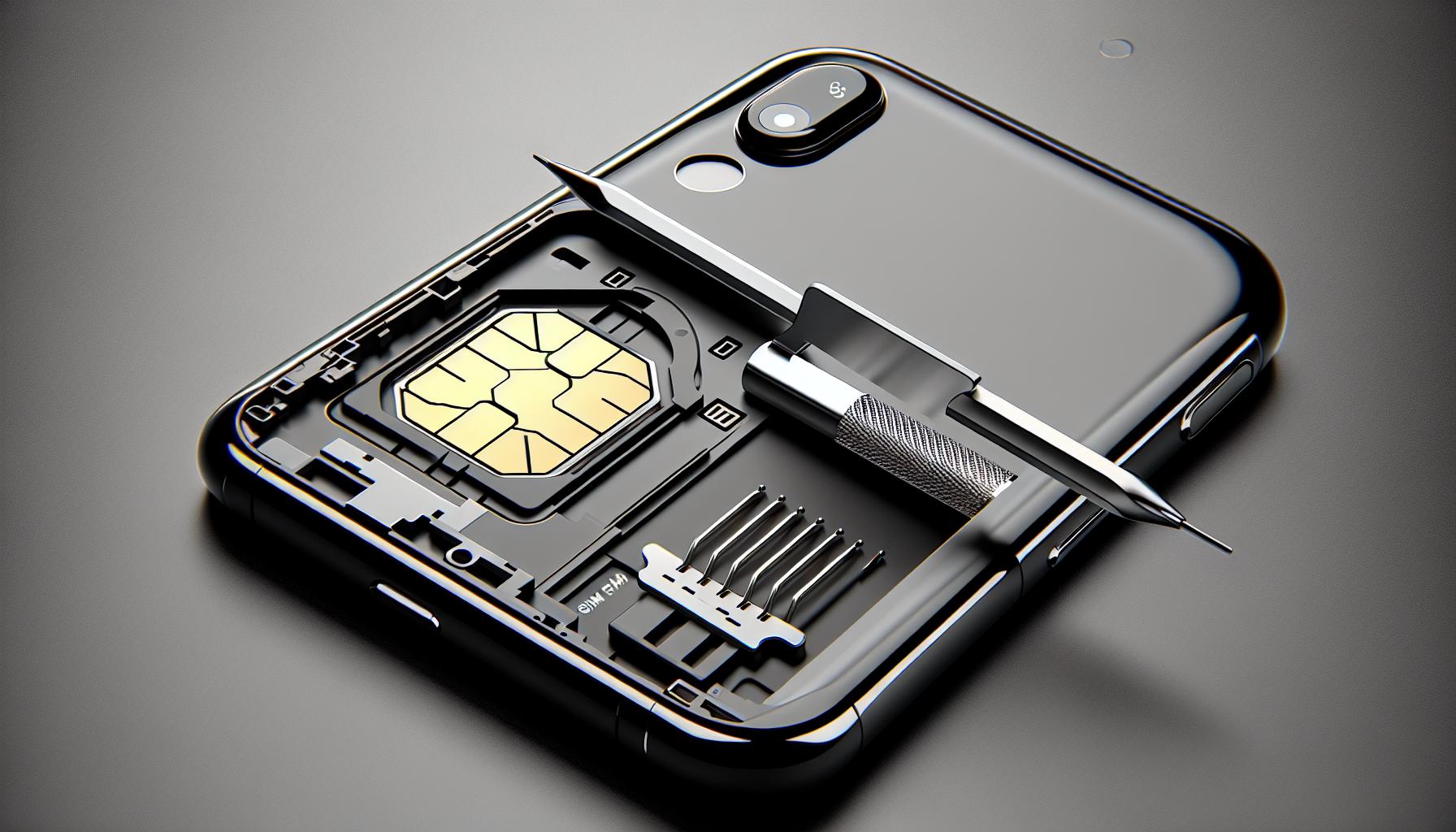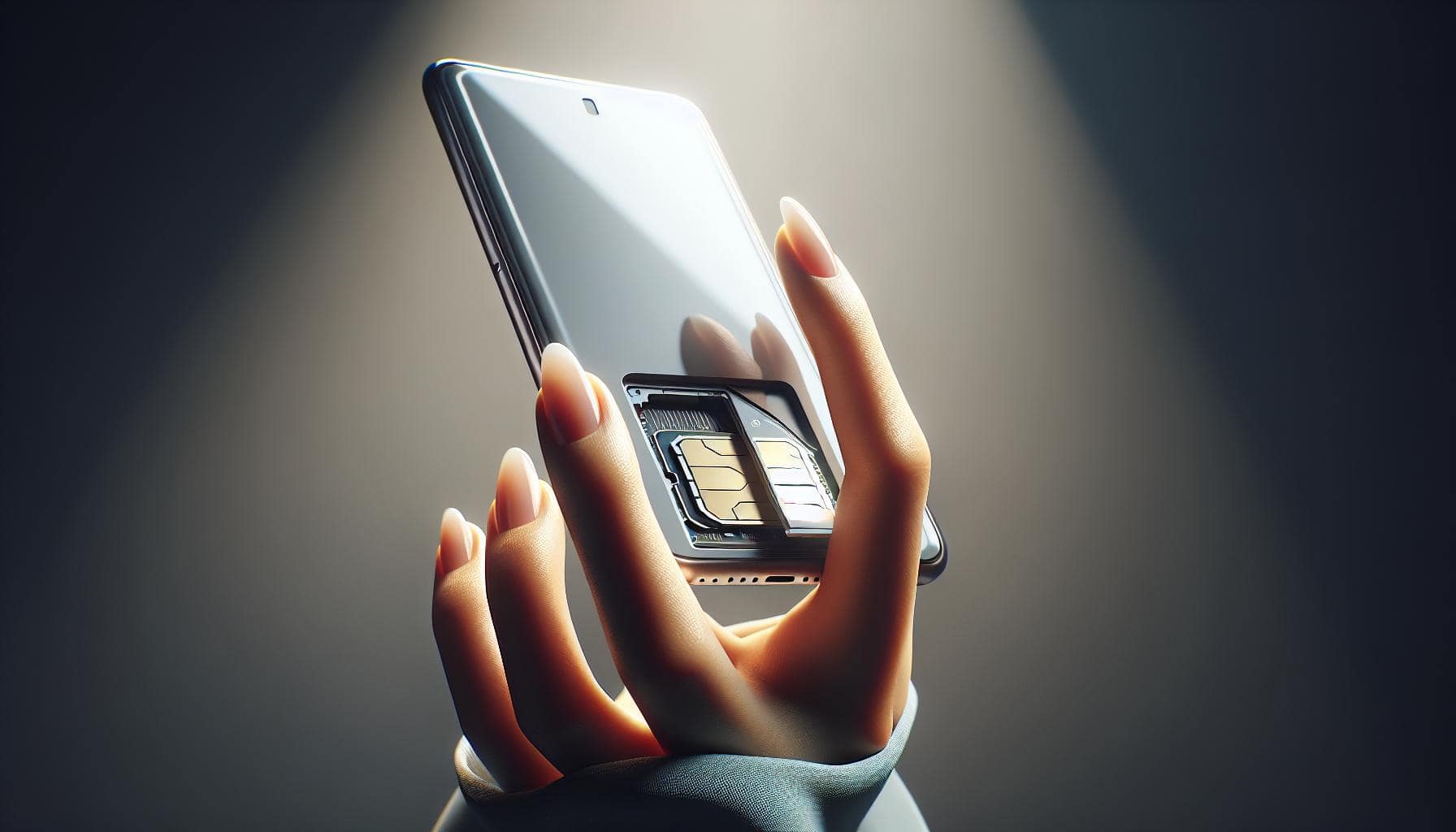Ever found yourself in a situation where you need to remove the SIM card from your iPhone but can't figure out how? Don't worry, you're not alone. It's a common issue that many iPhone users face, especially when it's time to switch carriers or sell their device.
In this article, you'll learn the quick and easy steps to get that SIM card out of your iPhone. Whether you're a tech newbie or a seasoned pro, this guide's got you covered. So, let's dive in and get that SIM card out, shall we?
Why do you need to remove the SIM card from your iPhone?
Few often wonder, why do you need to remove the SIM card from your iPhone? It's not just an exercise in electronics — it's a necessary step in several situations. When it comes to Apple devices and their users, understanding why and how to remove the SIM card is critical.
One primary reason to remove your SIM card would be to switch carriers. You might be pondering if it's possible to retain the same phone number while moving to a new mobile carrier. Absolutely! You can do this by taking your old SIM card out and replacing it with a new one from your preferred carrier.
Another reason you might need to remove your SIM card is when you sell your iPhone. You don't want the next person using your iPhone to have access to your contacts, messages or any form of personal information stored on that SIM card. By simply removing the SIM card, you ensure your privacy remains intact.
In case you're upgrading to a newer iPhone model, it's common to transfer the SIM card from the old device to the new one. Here's an important fact to remember: iPhone SIM cards are not model-specific and they're swappable between devices.
Another scenario might be that your iPhone is just not performing well or you're experiencing network related issues. Sometimes, resetting the SIM card can resolve these issues. You simply take out the SIM card, wait for a few seconds, then put it back in — good as new!
So, these are some common instances where you might want to know how to hit the eject button on your iPhone's SIM card.
Tools you'll need to remove the SIM card

Grasping how to take the SIM card out of an iPhone right? The task isn't complicated. You just need the correct equipment.
The key tool you'll need is a SIM card ejection tool. This comes packaged with every new iPhone. If you've lost yours, don't panic. There are other objects around the house that can do the job just as well. A fine-tipped pen, toothpick, paper clip, or earring can be substitutes. Remember, it's important to use an object that is sturdy yet slim enough to fit into the SIM card slot.
Before you proceed, it's important to switch off your iPhone. This can prevent potential damage while removing the SIM card. Also, consider placing a light-colored cloth on your workspace. Why? This is just a precautionary measure. The tiny SIM card is easy to lose, and the cloth can serve as an effective contrast.
Nowadays, lots of folks are keen on using gadgets for every task. If you fall into this category, you might want to consider a professional SIM card removal tool. More expensive than a paperclip or earring, for sure. Professional tools are designed exclusively for removing SIM cards, which can make the job more straightforward.
Organize your tools and clear a workspace before you begin the SIM card removal process. Stay patient, and remember that it's important not to force the SIM card out of its slot. A damaged slot can seriously affect your iPhone's performance.
With your tools ready to go, you're all set to remove your SIM card. Whether you're swapping carriers, upgrading to a new iPhone or resolving network issues, knowing how to get that SIM card out is incredibly helpful. So, it's time to roll up your sleeves and get started. The next section will assist you with the step-by-step guide.
^Remember, ^keeping ^your ^iPhone ^in ^top-notch ^condition ^is ^always ^the ^priority.
How to remove the SIM card from an iPhone
Up until this point, we've focused on the tools you'll need and the precautionary steps to note. Now, let's move on to the specific steps to remove a SIM card from an iPhone.
Before anything else, make sure your iPhone is powered off. To do this, press and hold the side button and one of the volume buttons at the same time. Then slide to power off. You don't want to risk damage or data loss by removing the SIM card from a powered device.
Secondly, locate the SIM tray. For most iPhone models, it's on the right side. Now, you'll need to use your SIM card removal tool or the alternative you've settled on. Insert it into the small hole and gently apply pressure until the SIM tray pops out slightly.
Gently pull out the SIM tray completely. Be careful not to jerk it out quickly as it might damage the internal components of your iPhone. The SIM card sits in a small holder on the tray and can easily be removed by a gentle push.
Should you struggle to get the SIM card out, resist the urge to force it. Remember, patience is key in these situations. Forcing it could cause irreparable damage to your phone. Instead, consider seeking professional help.
Once removed, safe storage of your SIM card becomes paramount. Keep it in a cool, dry place away from dust and other elements. You'd be surprised how delicate these small pieces of microelectronics are!
You're a step closer to mastering the procedure of how to get the SIM card out of an iPhone. This skill could prove vital if you need to switch carriers or upgrade to a new iPhone. Towards the end of the article, we'll cover what to do with your old SIM card and how to insert a new one. Stay tuned for that exciting information!
Remember, this guide works best for iPhones with physical SIM card trays. Some newer models rely on eSIM technology and don't require this process. If you're unsure which type you have, consult your phone's documentation or reach out to your carrier's customer service.
Troubleshooting tips for removing the SIM card
When You Can't Eject the SIM Tray
Despite having the correct set of tools, you might face some challenges while trying to eject the SIM tray. First off, don't panic. Remember that forcing the tray could cause permanent damage to your iPhone. So what should you do?
Start by rechecking the ejection hole. It's possible you're targeting the incorrect hole, especially if you're dealing with an iPhone model you're unfamiliar with. Have a look at the manual or search online to confirm the location of your phone’s SIM tray ejection hole.
If you're sure you're in the right spot, try changing the angle or rotation of the ejection tool. Sometimes, a slight adjustment can do the trick.
SIM Tray is Stuck
On other occasions, the SIM tray pops out slightly, but you cannot pull it out entirely. Here, too, resist the urge to apply excessive force. The tray is likely being caught on something internally.
In this situation, push the tray back in gently. Reposition your tool and try ejecting it again. The subtle movement might be enough to dislodge whatever was causing the blockage.
Can't Insert the New SIM
Getting the SIM card out of the tray is just half the battle. Issues can also arise when you're trying to put in a new SIM. Most iPhones use a nano-SIM card, but each phone model has a specific orientation for the SIM.
Don't force the card in if it's not fitting — you might have it upside down or reversed. Double-check the pattern on the SIM tray and adjust your card accordingly. Always remember to align the golden chip on your SIM with the corresponding pattern on your tray.
- Restart your iPhone.
- Update your iPhone to the latest version.
- Check if there's any visible damage to the SIM card.
Selling or transferring your iPhone? Don't forget to remove the SIM card!

Picture this scenario: you just sold or transferred your iPhone and then remembered that you forgot to remove your SIM card. Quite the conundrum, right?
Before rushing to hand your iPhone to a new owner, remember the most critical step: removing the SIM card. Your SIM card is essentially the heart of your mobile life. It stores all your contacts, call logs, and even some personal text messages. Forgetting to take this small piece out might expose your private data to an unintended audience.
What's more, your SIM card might still be tied to your phone number. It's a real headache to deal with identity theft or other potential security threats. You'll want to make sure you do everything you can to secure your privacy.
To get started with the SIM card removal, first turn off your iPhone. This precautionary step is crucial to prevent any potential interference with the iPhone's operating system. Use your trusty SIM card ejection tool (or your preferred alternative) to carefully pop out the SIM card tray. Should the tray become stuck, slightly adjust the angle or rotation of your tool. A light pressure should suffice — never force it out.
Once your SIM card is out, you have the option of inserting a new one. If you're transferring your device, this step isn't necessary, but for selling purposes, a dummy SIM card can be a decent solution. It helps preserve the shape of the SIM tray, which can be handy for the future user.
Don't forget, before transferring, to erase all settings and content from your iPhone. It's a simple but essential step to maintain your data security and privacy. After all, the goal is always to minimize any unexpected risks and keep your private information... private.
This guide is most applicable to iPhones with traditional, physical SIM card trays. Some newer models, especially those incorporating eSIM technology, might have different protocols. Stay tuned for our upcoming guide on handling eSIMs.
Conclusion
So there you have it! You now know how to safely extract a SIM card from your iPhone. Remember, it's crucial to remove your SIM card before selling or passing on your device. This simple step can save you from potential security issues and protect your personal data. If you're planning to sell, consider using a dummy SIM card. And don't forget to erase all settings and content first. While this guide is perfect for iPhones with physical SIM card trays, newer models with eSIM technology might require a different approach. Stay informed and keep your data secure.
Frequently Asked Questions
1. Why should I remove my SIM card before selling my iPhone?
Removing your SIM card before selling or transferring your iPhone is crucial to protect your personal data and prevent potential security threats. Your SIM card contains sensitive information that can be misused if fallen into wrong hands.
2. What should I use instead of my original SIM card if I'm selling my device?
If you're selling your device, after removing your SIM card, it's advisable to use a dummy SIM card. This ensures that the handset’s functionality will remain operative and the new owner can seamlessly set up the phone.
3. Should I erase all settings and content before selling my iPhone?
Yes, erasing all settings and content from your iPhone is highly recommended before transferring the device. This step is an added layer of security to ensure your private information is not accessible to the new owner.
4. Is this guide applicable to all iPhone models?
This guide is most applicable to iPhones that have physical SIM card trays. Newer models with eSIM technology may follow different protocols for removal and secure data wiping.




